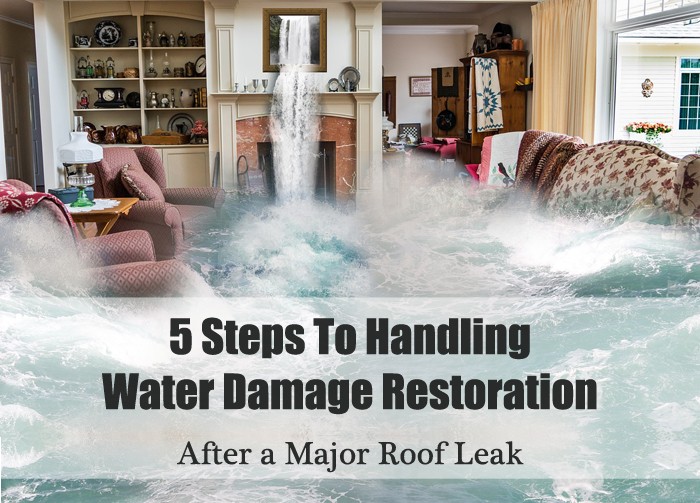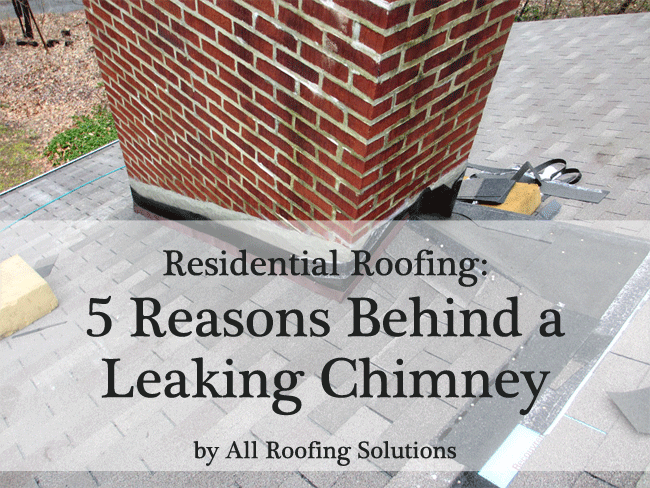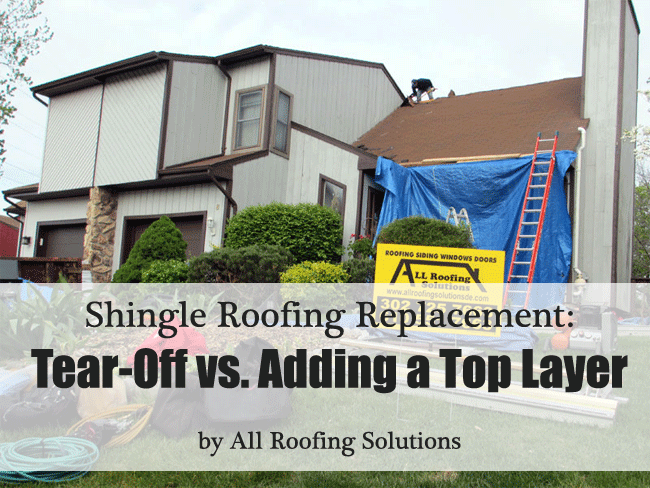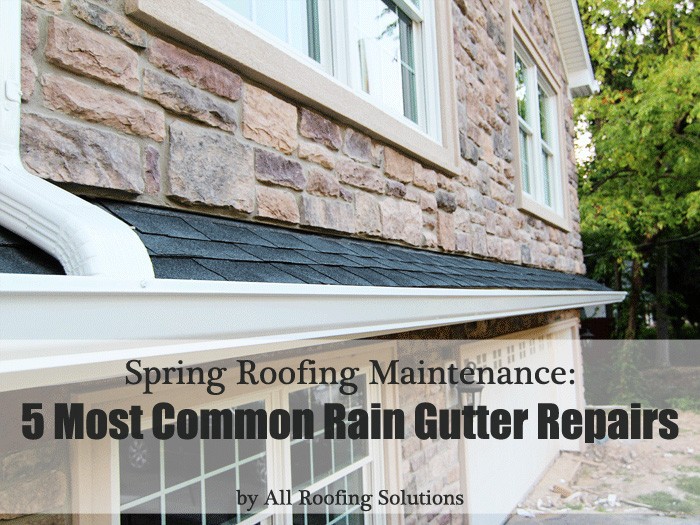Roof leaks are among the leading causes of water damage to residential properties. They can strike at any time and during any season, and unfortunately, they often go undetected until it’s too late.
It’s important to take prompt action if you’ve got a leaky roof, since water damage can quickly spiral out of control. However, many homeowners make mistakes during the remediation process, as they overlook essential steps in their haste to correct the problem. To that end, here’s a basic guide to the five key things you should to do handle water damage restoration if you’ve suffered a major roof leak.

5 Steps To Handling Water Damage Restoration
#1. Document the Damage
This is one important step that a lot of homeowners skip, but it doesn’t take much time and it can really help you in your dealings with your insurance provider.
Take photographs of the interior areas affected by the leak, showing its source, the water accumulation, and any damage caused by the moisture. If you’re comfortable going up on your roof, it’s also a good idea to gather a few snapshots of the exterior-side source of the problem, as doing so can help support the case that the leak wasn’t caused by your negligence.
Your insurance company will want evidence that the leak resulted from an accident, bad weather, or other uncontrollable circumstance. This is how you’ll get it.
#2. Get a Professional Inspection and Repair Estimate
Get your roof inspected promptly to identify the source of the leak and assess the extent of the damage. Next, obtain a written estimate from a licensed professional that details the nature of the problem, its possible cause(s), and how much it’s going to cost to fix it. You don’t need to commit to a contractor at this point; just get a repair quote in writing before moving on to the next step…
#3. Contact Your Insurance Company
…which is to call your insurance company.
Before you pick up the phone, though, review your policy to make sure water damage caused by a leaky roof is considered a valid basis for a claim. As long as the issue wasn’t caused by your negligence or willful failure to adequately maintain your home, chances are you should qualify for at least partial reimbursement. This is why it’s so important to thoroughly document the damage. However, reimbursement will depend on the specifics of your policy, so direct any questions in this regard to your insurance provider.
#4. File a Claim
It will take some time to complete the claims process, so you’ll want to get it started as soon as possible. Assuming the water damage and roof leak will be covered, most insurance companies will allow you to file a claim with basic documentation, such as photos of the damage and a professional repair estimate. Familiarize yourself with common filing mistakes so your claim is processed smoothly and promptly.
#5. Hire a Contractor for Repairs and Remediation
Once you’ve taken care of the documentation, estimate, and insurance claims issues, you can go ahead and choose a contractor. If your insurance company has given you particular instructions regarding the type of contractor or professional you should hire, be sure to follow their directions as your claim may be rejected if you don’t. For example, if you have extensive water damage that requires separate remediation, your insurer may want this carried out by a specialist (such as mold remediation contractor) rather than a general service provider.
At Mid-Atlantic Home Improvement, we are experts at insurance restoration. We work with your insurance company to ensure all necessary restorations are done properly so your damages is covered by your home insurance policy. We’ll handle the details of your insurance claim providing you with peace of mind during this trying time.
This article was provided by Doug Gentry of Mid-Atlantic Home Improvement, a Virginia general contractor with over 40 years of experience in home construction and renovation. Call (804) 647-0649 for your FREE ESTIMATE!




 Family-owned and operated contractor
Family-owned and operated contractor










